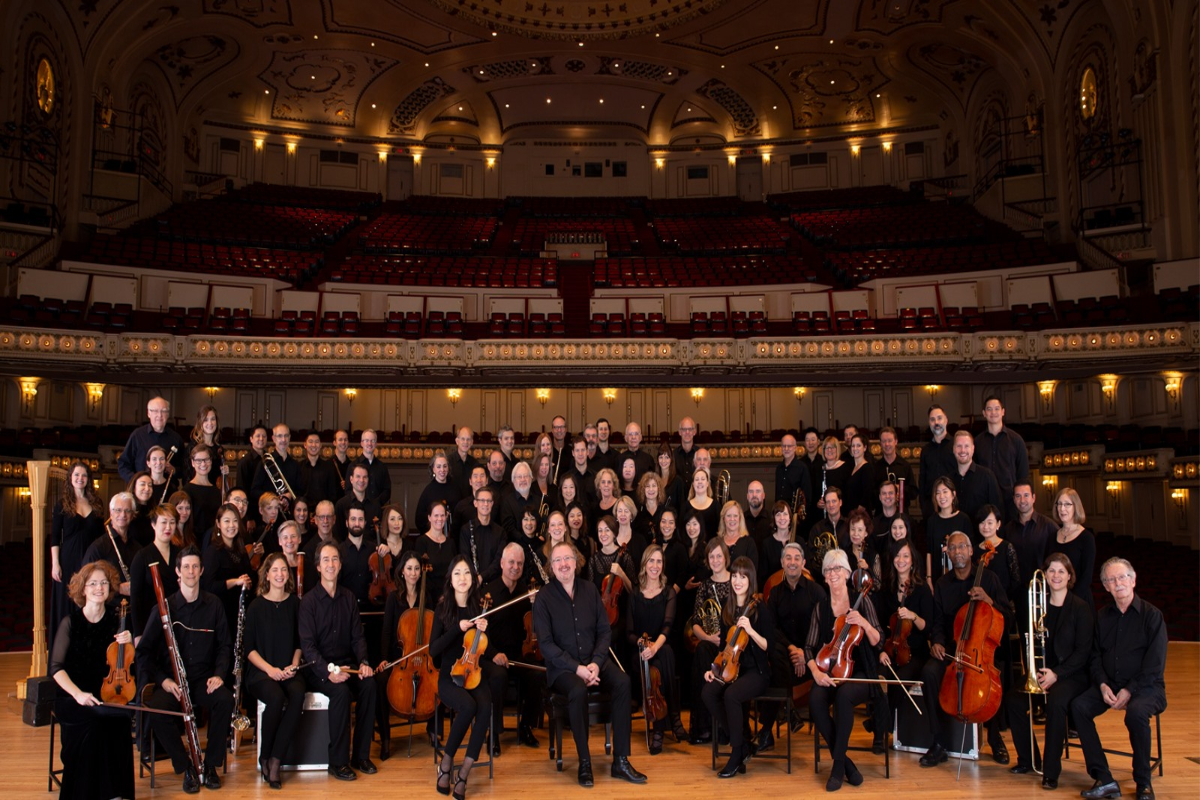The title of this review may appear dissociative. Detailing the performance of American and European classical music by an orchestra from St. Louis with a title taken from a remark made by an Argentinian fiction writer, which I cribbed from the set of program notes distributed at the performance. However, upon attending the St. Louis Symphony Orchestra performance on the night of Sunday, November 17th, I was struck by the inherently dissociative elements present within the music performed. Moving between such diverse pieces as Kernis’ Venit Illuminatio (Toward the Illumination of Colored Light), Bartók’s Violin Concerto No.2, and Brahms’ Symphony No. 4 in E Minor, Op. 98, the players of the orchestra adeptly balanced between the extremes of passion and precision, intellect and heart, and, indeed, as Jorge Luis Borges remarked, “Fuego y cristal.”
After opening remarks were made concerning the night’s programming by the ensemble’s music director and conductor, Stéphane Denève, the concert began in earnest with Venit Illuminatio. Denève briefly alluded to the composer’s, Aaron Jay Kernis, status as a synesthete: one who experiences two sensory or cognitive impulses at once. For example, if one were to read sheet music and experience the differing notes as distinct colors, one would be described as a synesthete. Immediately upon the beginning of Kernis’ piece, I was struck by the implications of synesthesia’s presence within the work.
Venit refracts and reflects, moving motifs through individual players and then whole sections in a patient manner, allowing them to fully inhabit the tonal colors evoked by the piece. Color–tonal and otherwise–remains vital. Kernis’ work operates on a strictly sensorial level, inviting the audience to consider the emotive and cognitive impact of musical thought as it dies away and becomes something new. In many ways, Kernis’ work could be described as the “Cristal” portion of Borges’ dichotomy. Every angle that yields a detailed look at the object situated before oneself, a slight variation may produce a radically different understanding of the whole.
In contrast to the relative placidity and contemplative mood of Venit Illuminatio, the orchestra’s rendition of Bartók’s Violin Concerto No. 2 explodes with anxiety and dynamism. Led by Gil Shaham’s resolutely physical solo violin, the Bartók piece rearranged the mood of the evening considerably. Bartók’s Concerto balances precariously between atonality and traditional harmony; stillness and restlessness. It does not just tend toward the “Fuego”; instead, it fully inhabits the flames. In addition to its many intensely formal aspects, special attention must be paid toward Bartók’s compositional use of Hungarian forms of folk and military music. This blending of traditions informs the harried dialogue between the solo violinist and the ensemble. Indeed, one may be able to discern the distant echo of traditional dance in Shaham’s violin before suddenly being hit by the striking force of the militaristic-sounding brass. One can quickly become lost within Bartók’s works if they’re unacustomed to the compositional techniques of the so-called modernists. However, the immediacy and musical force brought forth by the SLO is incentive enough to bear the harsher moments of Bartók if you prefer Bach, Beethoven, or Brahms.
Finally, the night’s programming arrived at Brahm’s Symphony No. 4 in E Minor, Op. 98. Following the near-ambient textures of Kernis and the density Bartók, the muscularity of Brahms’ fourth symphony took me by surprise. The SLO brought a thickness to the music of Brahms : a full-bodied musical exploration that could be sensed upon hearing the first notes. However, it is the symphony’s willingness to explore variation to the utmost degree that renders the work both emotionally and intellectually invigorating. Upon the sounding of the rousing final notes of the Allegro energico e passionato, one’s attention is not turned to the left-brained pleasures of the piece, but wholly to the right. In this respect, the thematic arc of the concert was complete with this symphony. Moving from contemplative tones to ones defined by an irrepressible fervor, we arrived at the culmination of these two polar opposite senses of musical emotion with the orchestra in the same moment. From the “Fuego” to the “Cristal.”
In this performative dialogue between form and emotion, the St. Louis Symphony Orchestra engaged in a considerable task. Perform without force, and the various pieces on display lose their luster; perform with too great a strength, and the pieces may very well shatter. Under the guiding hand of Stéphane Denève, however, the orchestra supplied each composer’s work with superb emotional and technical tact. In the concluding moments of this account of the St. Louis Symphony Orchestra’s performance, I must stress the fidelity paid to both of these extremes of expression, between the ever-present “Fuego y cristal.” Without either element, music, in my opinion, remains inherently ineffectual; however, on the night of Sunday, November 17th, both were present to the utmost degree.
St. Louis Symphony Orchestra
Krannert Center for the Performing Arts
500 S. Goodwin Ave.
Urbana, IL 61801
November 17th, 2019
Su 7 p.m.








